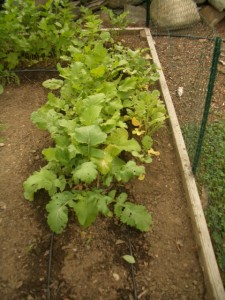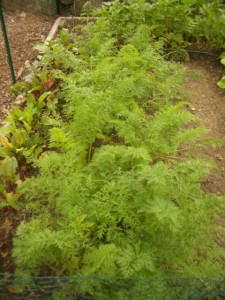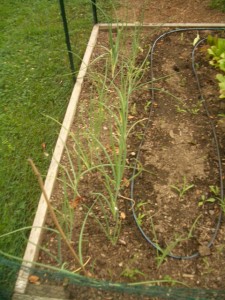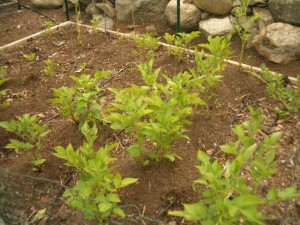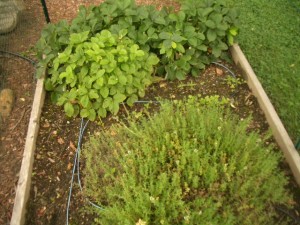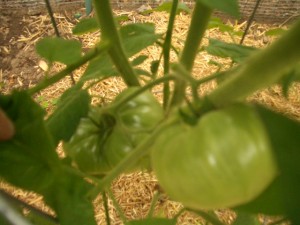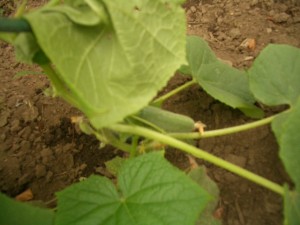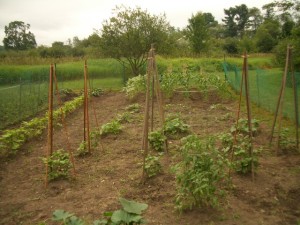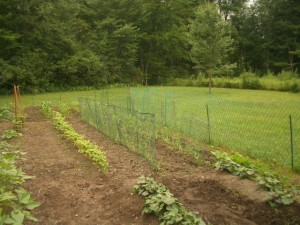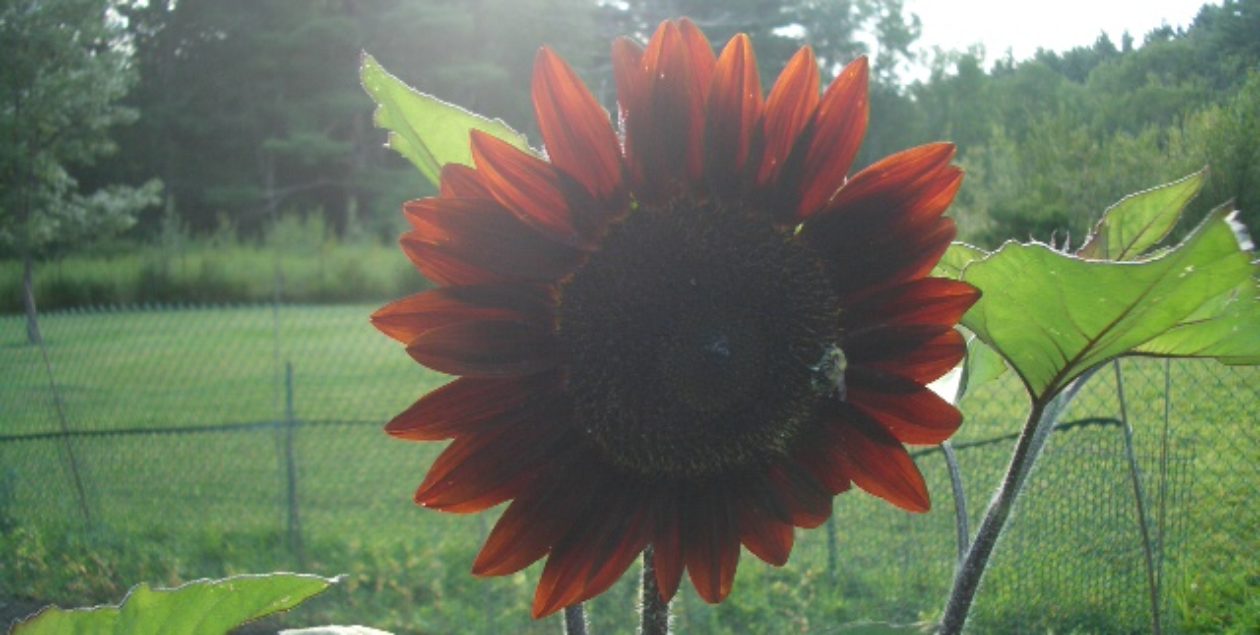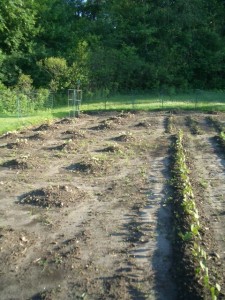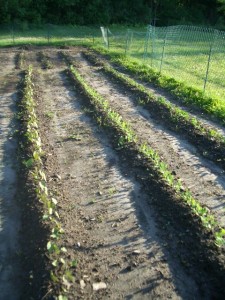Last year we tried, and failed, to grow watermelons. Our selected brand of choice was Sugar Baby, a small volleyball sized fruit noted for sweetness and quick ripening. One of the major problems of gardening in New England is that sometimes Mother Nature smites you with a frost the second week of September.
Our plants last year got to be about 8-10″ long, produce a few watermelons the size of golf or tennis balls, then shriveled up, died and rotted.
We were undeterred, however – only after trying something a couple of times and failing will we give up, so we used seeds saved from last year and planted seedlings this year, then transferred the seedlings out to the garden in mid-May. The plants grew, the fruit grew, and everything seemed to be unmolested by bugs. Hurrah!
Returning home from vacation this past weekend, we were confronted by basketball-sized fruit, dark green on the outside:
We Googled “how to tell if watermelon is ripe” and learned that you can:
a.) thump them – if they sound hollow, it is usually ripe;
b.) look for the spot where the melon rested on the ground – a yellow-white, yellow or a cream-yellow color spot suggests ripeness and a white or pale green spot indicates immaturity. A green watermelon will have a white bottom; a ripe melon will have a cream- or yellow-colored bottom;
c.) check the “pigtail” or tendril closest to the melon on the vine – when begins to shrivel and dry up. If it dries while the leaves and rest of the vine looks good, the melon should be ripe;
d.) crack a few. You’ve got a whole field of watermelons, and you can practice a little, right?
Er, no – we have exactly three watermelons, so the margin of error is non-existent. Also, there are no pigtail tendrils on our watermelons so we had to rely on a.) and b.) to decide whether or not to pick a watermelon. I would have let them go a few more days, or probably until next weekend, but J was really eager, and what do I know about yellow-white vs. white anyway? Better to let him take the shot in the dark and pick it, although cutting it was my responsibility:
The watermelon is not quite as sweet as some we have had but J swears it tastes better because it came from our yard. I would agree – and you don’t get much fresher than having watermelon with dinner that you picked 20 minutes before.
The remaining 2 watermelons are still out in the patch and will be picked in successive order as soon as they are needed. We’re calling victory on this one.
“When one has tasted watermelon he knows what the angels eat.” – Mark Twain
